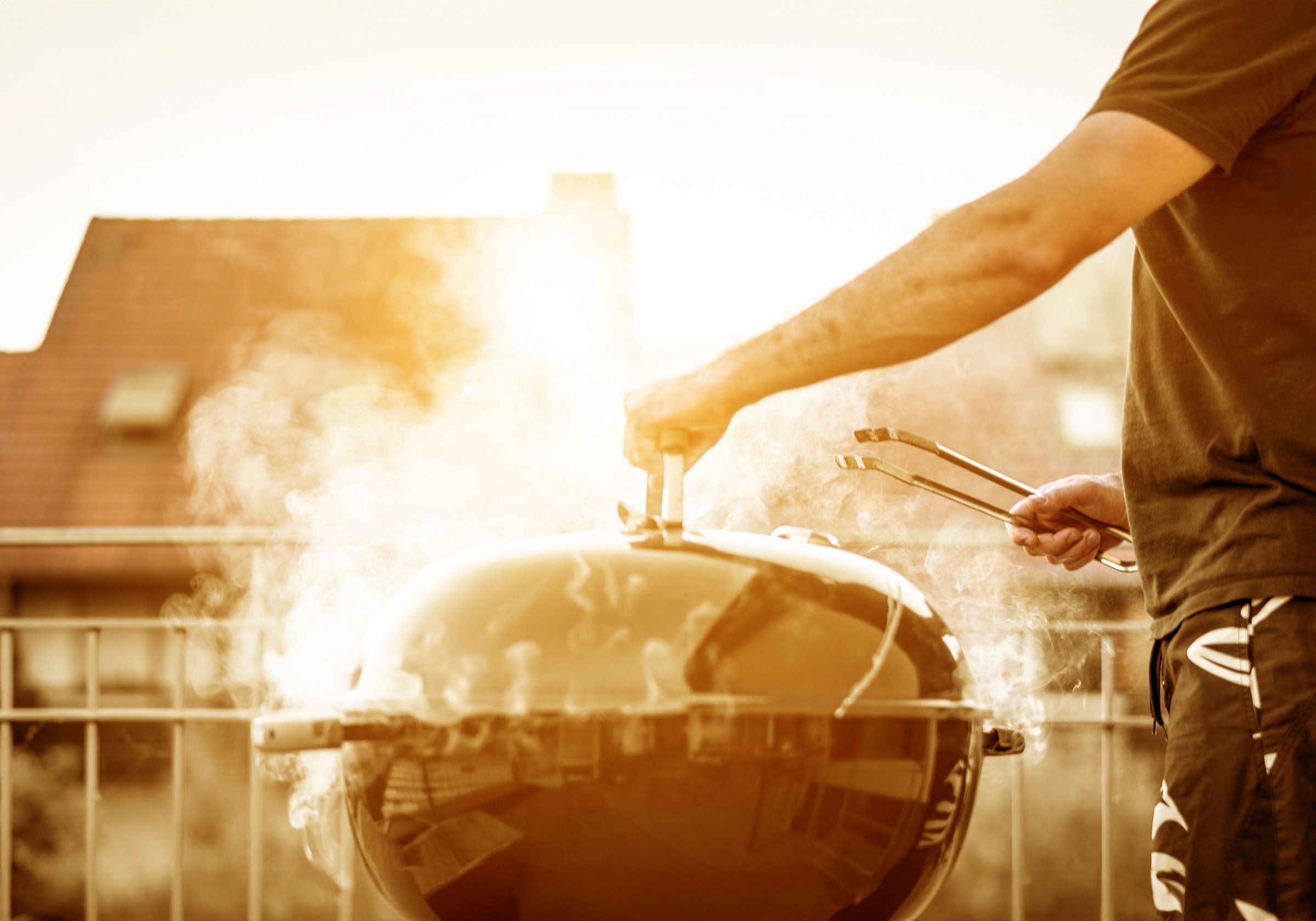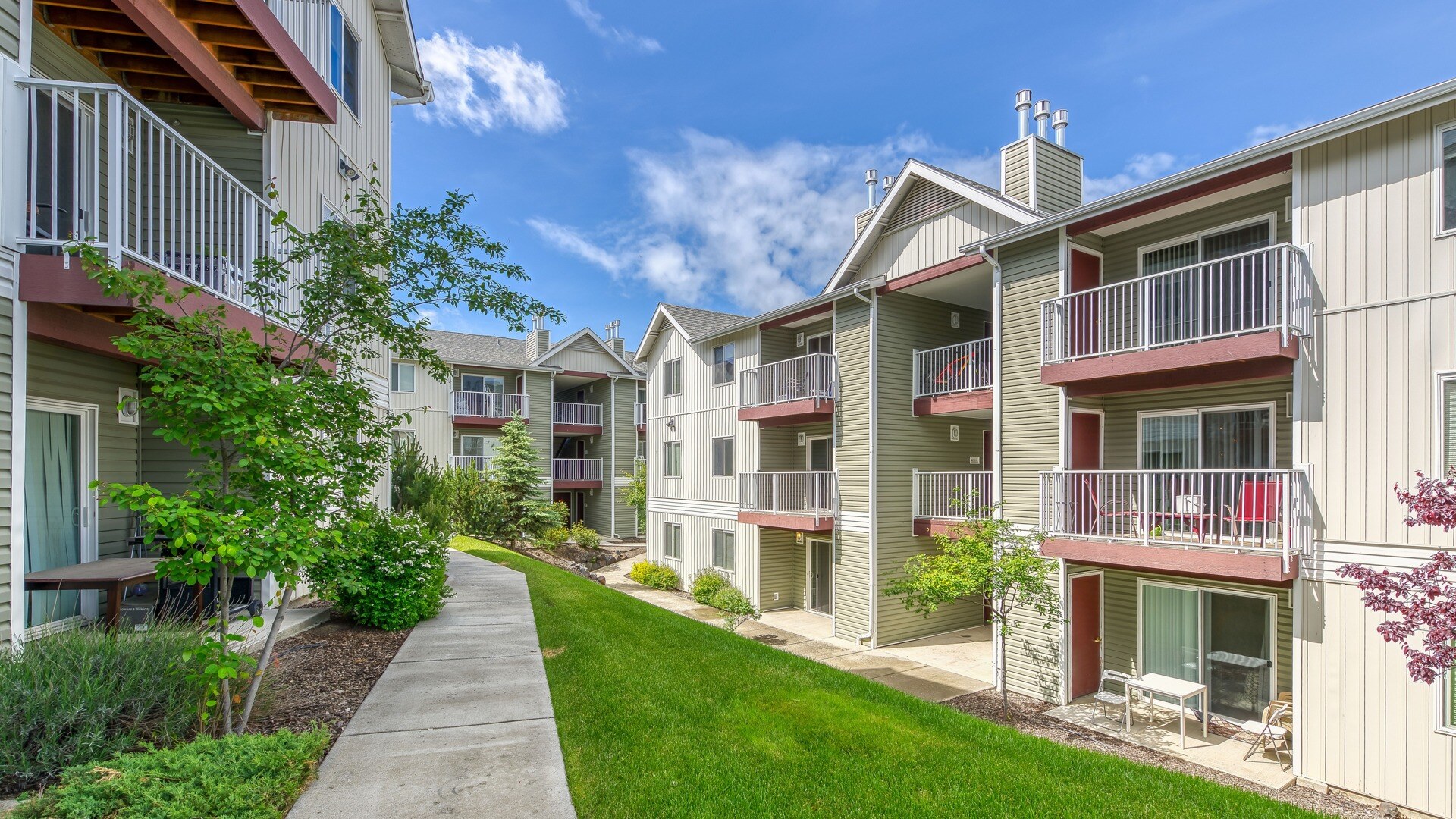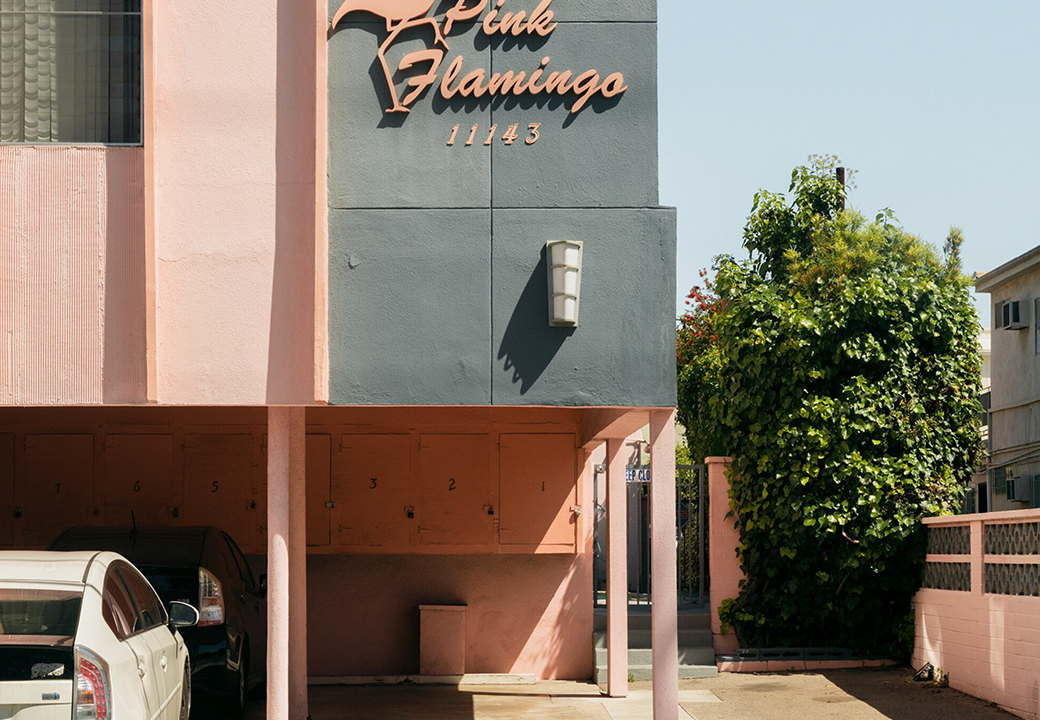Before continuing, be sure to stay informed with similar content by signing up for notifications.
Building design and passive fire protection
Fire has been a consistent concern for as long as humans have been constructing buildings. From ancient Egypt and Rome up until the present day, a steady march of innovation has culminated in the fire safety practices we know and rely on today.
But this innovation came with a price. Massive fires – the Great Fire of London in 1666, the Great Fire of Edinburgh in 1824, the Great Chicago Fire of 1871, the Great Seattle Fire of 1889, the Great San Francisco Fire of 1906 – leveled cities, killing and displacing thousands upon thousands of residents.1 To stave off future destruction, city planners, engineers, and law makers developed safety regulations and building codes to resist the threat posed by fire run amok.
It wasn’t until the 20th century, however, that our modern conception of fire safety really began to take root. Gone were the days of timber frame structures; stone and steel constructed skyscrapers and high-density apartment buildings began to spring up. The first fireproof door, invented in 1904, was introduced, spurring designers and architects to incorporate compartmentation into their building plans.2 Fireproof insulation, flame-retardant paint, and fire-resistant sealants became commonplace.
Related:
One Building or Two: The Role of Fire Doors
Apartment buildings of today, backed by rigorous regulations and decades of advancement, are safer than at any other point in history.
Apartments and fire safety
For the past 100 years or so, apartment design has incorporated the concept of compartmentation, or the sectioning off a building into different compartments. It’s a simple concept: if a fire starts in one of these compartments, it remains contained within that area, stopping fire, heat, and smoke from spreading while providing enough time for residents to evacuate and fire services to arrive to battle the blaze.
Here is an example of a basic compartmentation system:
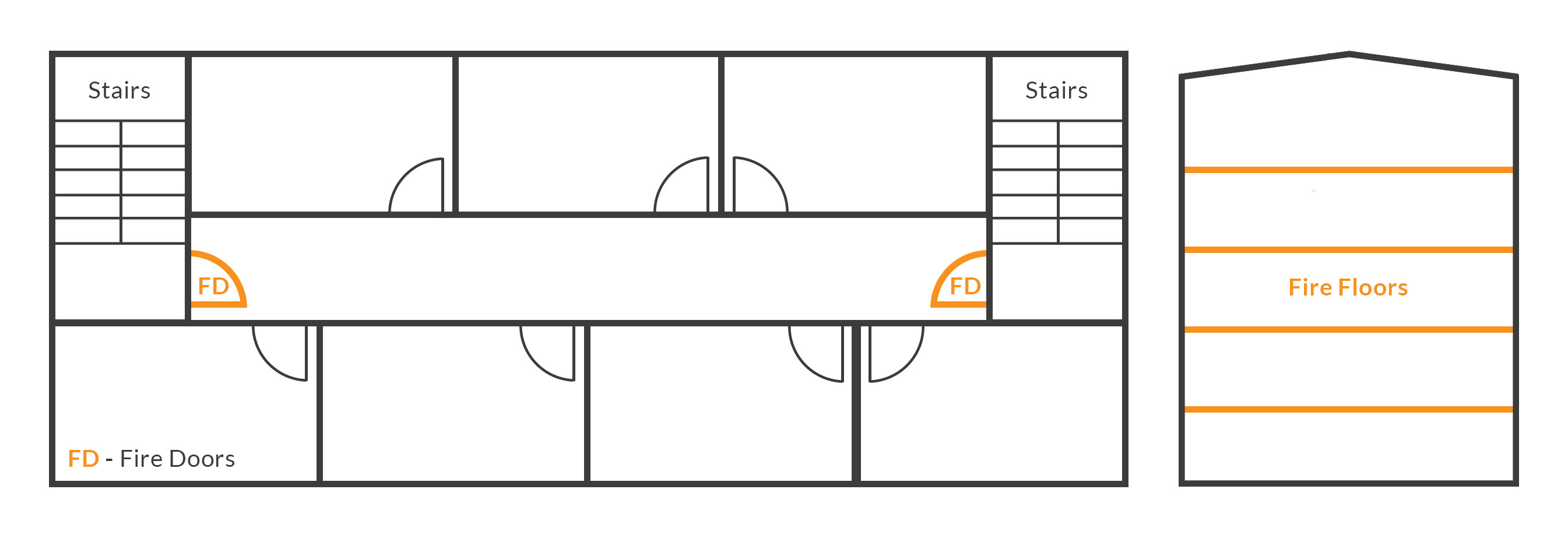
In this system, the fire doors and fire floors contain the fire on a single level of the building.
The older the apartment is, the simpler the compartmentation system; modern systems, fully realizing current regulations and technologies, are becoming increasingly effective. They may include more robust fire-resistant walls, turning each individual unit into a compartment of its own.
Fire resistant doors, floors, and walls, alongside insulating barriers, have the ability to almost completely contain an isolated fire event, if only long enough to allow emergency services to handle the situation.
However, even the most hardened structure, complete with all the latest in fire resistant construction, has it’s Achilles heel.
Trouble outside
Compartmentation systems tackle apartment fires that originate within the confines of the building itself. After all, most fires originate in the kitchen, bedroom, or living room.3
But what happens if the fire originates outside the apartment?
Not every apartment has an outdoor space, but it’s become increasingly common for structures built in the last 50 years to incorporate balconies into their designs. As a resident, this is an attractive offering: a private space to get fresh air, soak up the sun, and relax out of doors. But it also presents a potential problem.
If you’ve ever taken a walk near an apartment complex, you may notice that some residents have barbeque grills on their balconies. It makes sense, right?
It goes without saying that there are risks inherent in barbequing, no matter where you do it. But these risks are heightened when the activity takes place on an apartment balcony. Here are some of the risks:
Limited fire containment:
As we’ve outlined in the previous section, apartments are first and foremost designed to mitigate loss from fires originating inside; this emphasis may leave a protection gap for fires that occur on the balcony.
Vertical fire spread:
Balcony fires are able to extend vertically, affecting multiple floors of a building and potentially compromising fire floors and other fire-resistant barriers.
Rapid growth:
Combustible materials (outdoor furniture, plants, etc.) combined with exposure to wind may enable rapid spread of flames.
Delayed detection:
Balcony fires may not be immediately noticed, allowing them to grow in intensity before residents or emergency services become aware of the situation.
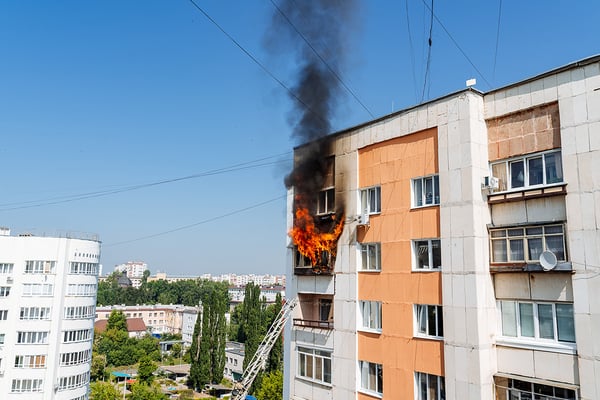 Balcony fires can bypass passive fire protection measures,
Balcony fires can bypass passive fire protection measures,
making them extraordinarily destructive.
Related:
Preserve the Summer Fun: Prevent Rooftop Deck Fires
In contrast to interior fires that occur in the kitchen or other living spaces, fires that occur on an apartment balcony can bypass passive fire protection measures and rapidly spread to other parts of the building.
So, you may be asking, “why do apartment managers allow barbeques to be used in the first place?”
The answer is that technically they don’t. Most apartments are likely to have rules against balcony barbeques, but it’s lightly enforced. All that matters is that tenants pay rent and don’t disturb their fellow residents – beyond that, landlords have insurance to cover the potential fallout from a balcony fire.
Insurance companies typically avoid providing coverage for buildings that permit balcony barbecues. Despite this, there may be instances where the official policy and actual practice differ. Is it possible to identify apartment buildings or complexes that unofficially allow residents to barbecue on their balconies?
Identifying exposure
There are over 2,000 apartment buildings in Washington state alone, a number that continues to grow.4 In fact, as the need for housing grows, an apartment boom is underway across the country.5 In 2023, nearly half a million apartment units were constructed; that number is expected to grow over the coming years.
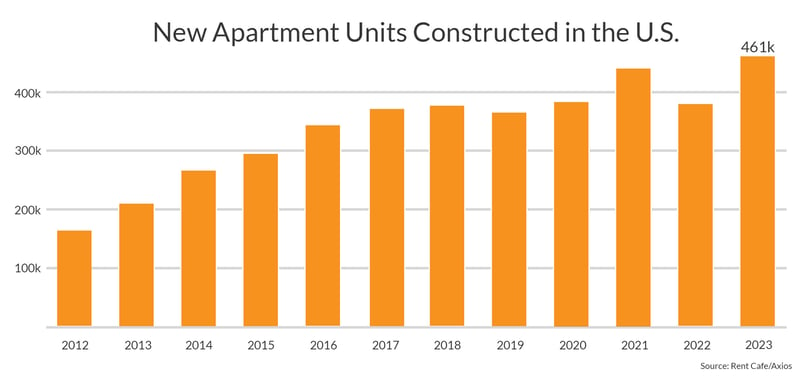
As more structures pop up, insurers need to become increasingly vigilant, ensuring that the properties they cover diligently enforce balcony barbeque policies. And we’re here to help.
Using publicly available data from multiple sources, our team of underwriting veterans are able to quickly flag properties that require further review. In other words, you give us your list of apartment addresses, and we will return to you a list of flagged properties, enabling you to examine potential exposures hidden in your book in a fraction of the time.
We're here to help; reach out to get started!
Balcony safety tips
To cap off this article, here are a few important safety considerations for folks living in balcony apartments:6
- Avoid putting Christmas lights on the balcony.
- Never barbecue or operate a fire pit on your balcony; embers could ignite yours or your neighbors' balconies and possessions.
- If you smoke, ensure your cigarette is fully extinguished and never throw it over the side, as it may ignite possessions on lower or adjacent balconies.
- Do not store or set off fireworks on your balcony.
- Steer clear of adding combustible screening/flooring to your balcony, including artificial grass.
- Be mindful of any open flames
- Limit balcony storage and avoid storing waste items on the balcony.
- Report any defects, cracks, damage, or loose materials to the management.
Stay safe out there and, if you’re feeling a hankering for grilling up some grub, head to your local park instead. And remember: you're only as safe as your most unsafe tenant.
[1] Wikipedia, https://en.wikipedia.org/wiki/List_of_town_and_city_fires
[2] Select Door, https://selectdoor.ca/blog/2023/09/21/past-to-present-the-history-of-fire-rated-doors/
[3] Safewise, https://www.safewise.com/blog/the-most-common-places-that-fires-occur-in-the-home/
[4] Smartscraper, https://rentechdigital.com/smartscraper/business-report-details/united-states/washington/apartment-buildings
[5] Axios, https://www.axios.com/2023/09/07/apartment-building-construction-record-high
[6] Avon Fire, https://www.avonfire.gov.uk/safety-advice/fire-safety/balcony-fire-safety




